Overview of the Idaho Enhanced Concealed Carry classes
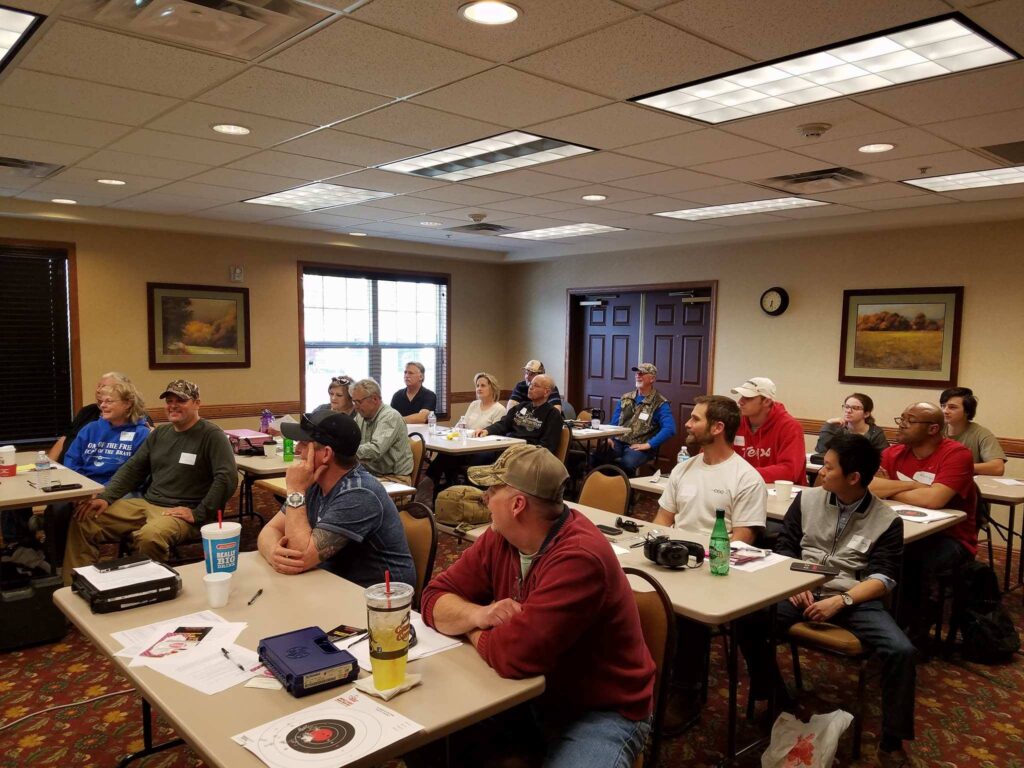
The Idaho Enhanced Concealed Carry class is one of the country’s strongest and most respected concealed carry licenses. Because of its strength, the Idaho Enhanced Concealed Carry classes recognition and trained. It is honored in 37 states nationwide.
A significant amount of responsibility is instilled in the citizens of the United States when carrying a handgun. Concealed Carry Permit Holders are expected to answer to a higher standard. Concealed Carry holders must understand and obey federal, state, and local laws in their home state of Idaho and when traveling.
Formal Training Requirements
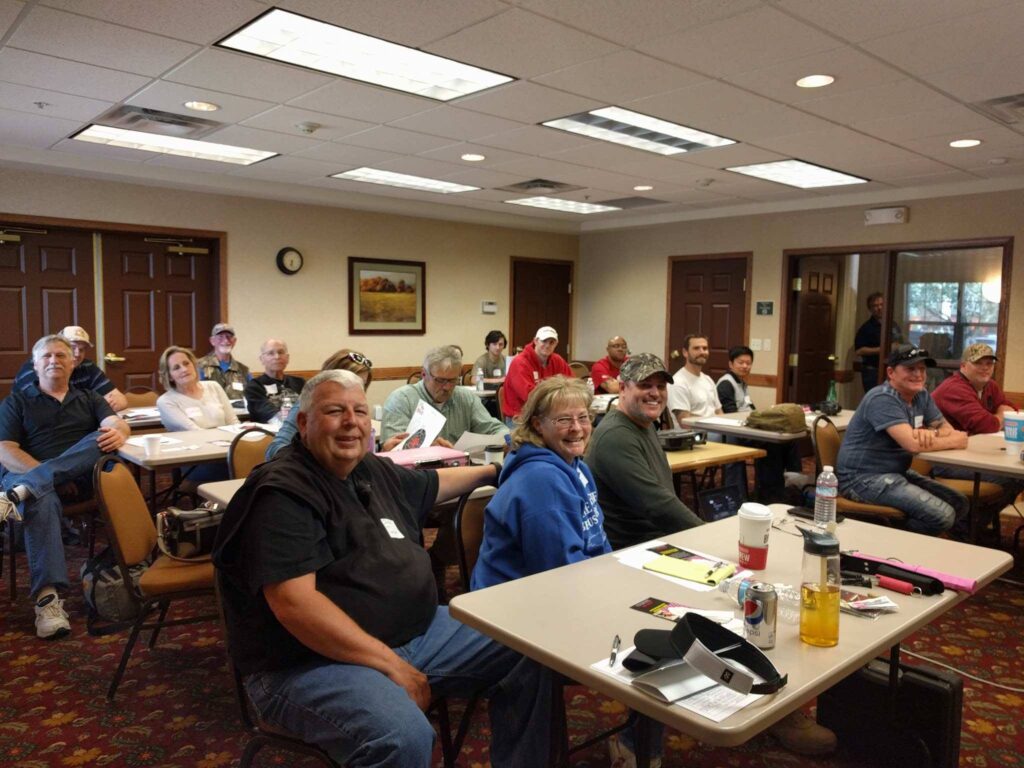
The importance of attending in-person Idaho Enhanced Concealed Carry classes cannot be emphasized strongly enough. Some states accept online website training, basic pistol safety classes, state-endorsed courses, and many other options.
At the time of this publication, 25 states allow constitutional carry without formal training. This means your neighbor, the person on the street, or anyone you encounter can potentially possess a concealed firearm.
Constitutional states allow any individual to carry without any training at all. Regarding traveling in these other states, you have no idea if concealed carry citizens have been adequately trained to use firearms. Properly trained does not mean the person knows how to use a gun. The proper time to use a pistol is known to someone with the necessary expertise.
To ensure your safety and protect those you love. You should sign up for an accredited Idaho Enhanced Concealed Carry class to learn when you can and cannot use a firearm.
Reciprocity
With the recent ruling from the supreme court, more states are likely to accept the Idaho Enhanced Concealed Carry classes training. Get yours today!
Based on the level of training we provide, here are all the states you can apply for their concealed carry licenses:
- Idaho Enhanced Concealed Carry Weapons License (Idaho IECCW)
- Idaho Standard Concealed Carry Weapons License (Idaho CCW)
- Arizona Concealed Weapons Permit (CWP) – No Additional Training Required.
- Oregon License to Carry Handgun (LTC) – No Additional Training Required. Students need to apply in person at an Oregon Sheriff’s office.
- Utah Concealed Firearm Permit – Unnecessary – You do not gain additional states.
- Washington Concealed Pistol License – No Additional Training Required – Included in Idaho Enhanced License)
- Idaho Enhanced Concealed Carry classes
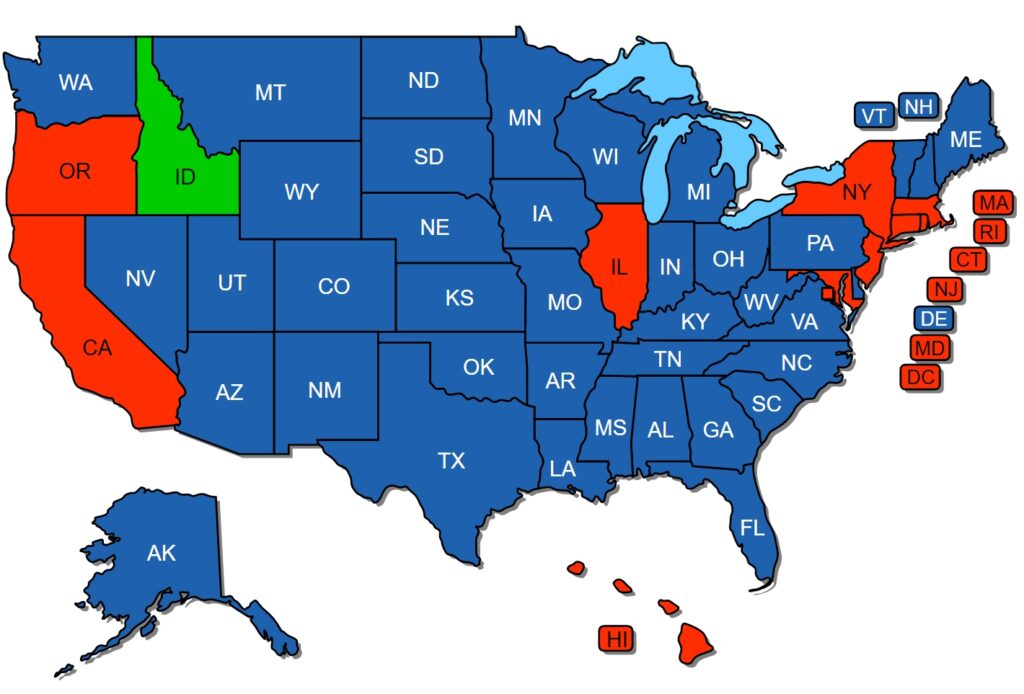
States you can carry with the resident* Idaho Enhanced Concealed Carry Weapons License
Note: Oregon allows residents of Idaho to apply for a non-resident Oregon Concealed Carry Permit – no additional training is required.
Note: Utah and Arizona Licenses do not add additional states.
*Non-resident restrictions apply to some states.
Class Curriculum for the Idaho Enhanced Concealed Permit
The requirements for applying for the standard Idaho Concealed Carry Weapons License (CCW) are fairly easy to attain. A quick pistol safety class, a trip to the local sheriff’s office, and a few dollars will buy you a standard permit (provided you pass a background check).
The instructors’ primary responsibility is to prepare lesson plans and submit them to their local sheriff’s office for approval. The lesson plan must meet or exceed Idaho state minimums.
Below are some topics we teach at Level 1 Firearms Training LLC. Any conceal carry instructor should teach to ensure you receive a well-rounded education.
Class Curucuilimn for the Enhanced Licence
Idaho and the Law
Are you Capable of using Deadly Force?

The use of deadly force is not a subject that can be undertaken lightly. The use of deadly force is a serious subject matter that must be considered the moment someone decides to carry a concealed weapon.
Citizens must ask themselves if they are capable of taking another human being’s life. It’s a question that cannot be asked lightheartedly. The taking of another person’s life changes you forever. Right, wrong, justified, or not; it’s a decision you will have to live with your entire life. (See our training calendar for times and locations near you.)
The Levels of Mental Awareness

The last block of the four levels of mental awareness and self-defense is the condition “alarm”, sometimes referred to as “condition red”. Condition red is the stage where a person has verified a threat or threats are real and where action must be taken. Remember, you cannot use more force than is legally allowed.
Should the level of threat rise to the point you fear great bodily harm will occur to you or your family, or the loss of limb or threat of life is imminent you must act. You must count on your training to guide you in the actions you take to defend yourself.
Idaho Speaks Clearly to the Use of Deadly Force:
A person may stand his ground and defend himself or another person by the use of all force and means which would appear to be necessary to a reasonable person in a similar situation and with similar knowledge without the benefit of hindsight
Idaho Statutes Title 19 – Criminal Procedure, Chapter 2 – Prevention of Public Offenses 19-202A (3)
Remember, the use of deadly force must be justifiable and will fall under a great deal of scrutiny afterward. In the event, that deadly force is used, remember your training during the legal portion of your pistol concealed carry class. Don’t say anything to the police until your attorney is present. You have the right to an attorney, insist one be present during all questioning no matter how innocent or justified you feel.
Reactions to an Attack
Posturing
Posturing is the act of pretending to be ready for a fight, acting tougher than you look, and able to win a fight. Posturing includes verbal and non-verbal communication, body language, appearance, and willingness to accept the challenge. Actions such as shouting your commands, using an authoritative voice, and taking a boxing or martial arts fighting stance all are examples of posturing. In essence, posturing is fighting without the physical attributes attached to it.
Physical Responses to an Attack
Overview
You will experience two physical relations: Adrenaline Rush and the Loss of Fine Motor Skills.
Adrenaline Rush
An Adrenaline Rush occurs as you prepare to defend yourself against an attack. More precisely, the body releases high volumes of adrenaline at an accelerated rate for absorption into the bloodstream. Your body will begin to react with increased heart rate, respiration, pupil dilatation, and muscles will begin to tense up in anticipation of a fight. Your muscles tense up, and uncontrollable body tremors occur.
You have probably experienced an adrenaline rush in the past. A frightening movie scene, a loud noise, or a near brush with a dangerous accident are all examples that can cause fear..
Loss of Fine Motor Skills
Your fine motor skills determine your ability to accomplish everyday routine tasks easily.. Manipulating a firearm becomes much more difficult. Simple tasks become cumbersome. Releasing the safety, pulling the hammer, changing magazines, or even unholstering. To counter the loss of fine motor skills, seeking additional training, advanced drills, exercises, and repetitive actions will go a long way.
Changes in Perception during an Attack
Tunnel Vision

When under attack, your body tends to focus on the immediate threat, blocking all other vision views. In medical terms, this is referred to as Peripheral Vision Loss (PVL); a loss of peripheral sight or side vision. In the firearms world, this is referred to as tunnel vision.
The by-product of tunnel vision is the inability to see potential threats that may be located just to the right or left of the threat. To combat tunnel vision, it is essential to scan and assess the surrounding areas for any additional threats.
Auditory Exclusion

Auditory exclusion affects your hearing. The ability to hear sounds may become muffled, muted, or suppressed. You’re only focused on the attacker, not the sounds around you.
As with the military, police officers, and even yourself, you should train to shout your commands loud and clear.
Police officers have been trained to shout out their commands. Why? They have been trained to understand the effects auditory exclusion has on people.
If a police officer shouts a command, you should acknowledge it, and repeat it to them. This ensures you understand the command and comply with the officer’s orders.
Time Dilation

Time dilation makes time appear to slow down. Seconds are minutes, activities seem to be occurring in slow motion, and the passage of time is skewed.
Because of the existence of the time dilation phenomena, it is always best to refrain from recounting events as you perceived them to have occurred. After a life-threatening event or self-defense action has taken place, it takes time for the body and the brain to recap what happened in what order and the amount of time it took.
No statements must be made until an attorney is present and after the attorney has had an opportunity to review the events. It is common for the attorney to advise you to take a few days before making a statement, allowing your mind to reassemble events correctly.
The Emotional Impact of a Defensive Shooting
Elation

Elation is the feeling you have after facing seemingly impossible odds and winning. It’s that feeling of joy, satisfaction, and wanting the whole world to know you have accomplished something great. Elation is perfectly normal once you have survived a life-threatening event. Who wouldn’t want to celebrate after facing a near-death experience?
Being elated can have its drawbacks as well. The outsider looking in might feel you are overly gratified and satisfied that you have taken someone’s life. You may even have bragged a little bit more than you should in an inappropriate manner. Elation in many ways is the body’s built-in defense mechanism for overcoming fear.
While the feeling of elation is perfectly natural, don’t be surprised if it goes away suddenly as the reality of taking another person’s life takes a toll on your physical and mental well-being. When elation is over you will likely feel the effects much like you would when coming off an adrenaline rush.
Avoid Using Your Weapon
Using deadly force is very seldom black or white. It is rarely evident if it was right or wrong.
The line between a just and unjust homicide is extremely thin to determine, even under the best circumstances. With proper training, the conceal carry citizen should learn de-escalation techniques. Properly trained individuals should use the options available to them. Utilizing a firearm should consistently be your final resort!
Responsible concealed carry holders will avoid certain areas of town, times of day to be out in public, controversial clothing, and many other considerations.
In most states, the saying “a man’s house is his castle” is not a literal statement. A shooting occurring on your property or home comes under much scrutiny to determine if the shooting was justified. The best advice in any instance is to avoid the situation, walk away, or find some other form of personal protection if available and justified.
Other instructors insist I have Arizona, Florida, and Utah Non-resident licenses to get the best coverage. Is this true?
NO!
Many Instructors insist that you need to have additional permits from other states. This is simply not true.
Let’s compare these additional out-of-state permits side-by-side.
As You Compare Idaho Enhanced Concealed Carry Coverage
Ask Yourself Why You Would Need Additional Permits
Idaho Enhanced Concealed Carry Weapons Permit Reciprocity Map

Arizona Non-Resident Concealed Carry Weapons Permit Reciprocity Map
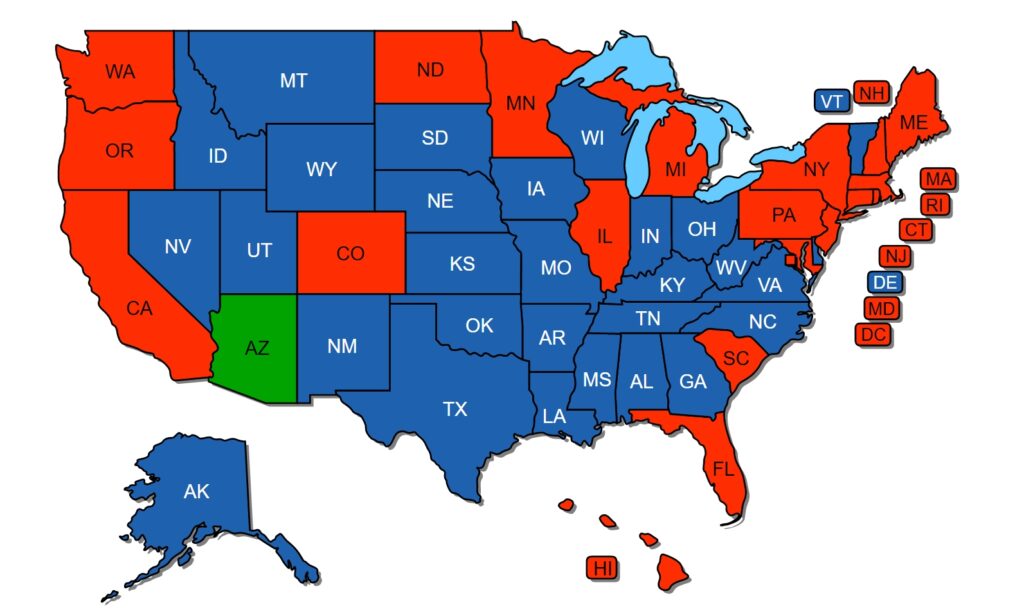
States Gained:
- NONE
Florida Non-Resident Concealed Weapon License Reciprocity Map

States Gained:
- NONE
Utah Non-Resident Concealed Carry Permit Reciprocity Map
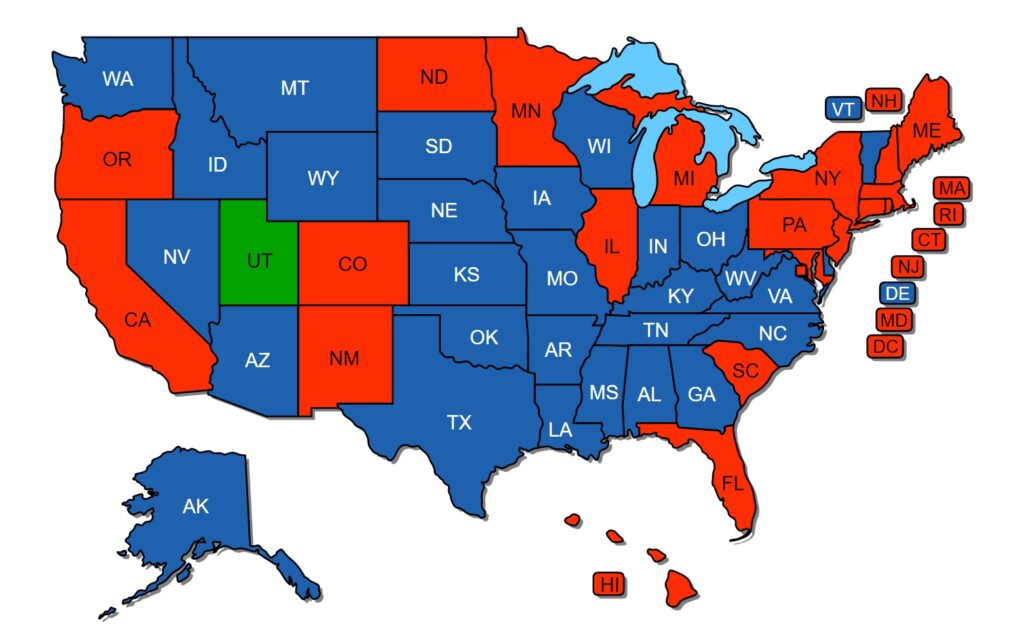
States Gained:
- NONE
The bottom line, you don’t need additional permits!!!
This is a Two Day Course!
Why is this a 2-day course? Our Idaho Enhanced Concealed Carry Weapons Class is the best Idaho concealed carry training you will receive. We want you to be properly trained when carrying a firearm in public; there are no shortcuts to carrying concealed properly.
Indoor ranges in Idaho do not accommodate outside instructors which makes no sense – we are literally bringing them, customers! We have chosen to utilize one of the several outdoor ranges in the Treasure Valley that like us bringing them customers. Indoor ranges are loud, really loud. You cannot hear the instructor while training and are extremely restrictive with what you can teach.
Indoor ranges do not accommodate drawing from holster nor do they allow movement on the range. Indoor ranges are loud, have long wait times on the weekends, and charge as much as 25/hr. in some locations we train. We have chosen to utilize one of the several outdoor ranges so we can train you correctly without the need to rush you through the skill-building portion of the class. You learn in a safe, comfortable, and fairly quiet environment.
Outdoor ranges are extremely hot or cold in the late afternoons which distracts new students from concentrating. By shooting early in the morning the following day of class, students are fresh and ready to train for self-defense shooting skills.
Prerequisites:
— MUST BE 18 YEARS OLD —
- NONE. It is assumed you know how to use your gun. This is not a basic gun class.
- If you are new to guns: It is highly recommended that you attend formal gun training such as the Idaho Pistol Essentials 101 Course, or the Women’s Only Workshop Pistol 101 Course.
- Between 18 and 21, you will receive a standard Idaho Concealed Carry Permit. When you turn 21, it can be upgraded to the Idaho Enhanced Concealed Carry Weapons Permit.
Adherence to the primary safety rules must always be followed.
- Keep the Firearm Pointed in a Safe Direction.
- Keep the Firearm Unloaded Until Ready to Use.
- Keep Your Finger Off The Trigger Until Ready to Shoot.
- Know Your Target and Beyond.
- No Drugs, Alcohol, nor Cannabis are Allowed At The Range.
Equipment:
Day 1: Classroom – Saturday
- Notepads, pens, paper, highlighter.
- A personal revolver or pistol of any caliber, cased, secured, and free of ammunition.
- Strong-side Holster, Appendix Holser, or Holster Purse: Preferably the one you intend to use when you carry concealed.
- No Serpa Holsters Allowed
- Training Cartridges (Dummy Rounds): At least 5 Training Cartridges in the correct caliber are needed for this class.
- Can be found at local sporting goods stores or online.
- Suitable Eye Protection. This can be wraparound eyewear, polycarbonate lenses, or non-shattering prescription glasses.
- Suitable Ear Protection. We recommend electronic noise-canceling earmuffs, but earplugs are acceptable.
- Approxiament Length: 6 Hours
Day 2: Range Day – Sunday
- A personal revolver or pistol of any caliber, cased, secured, and free of ammunition.
- Strong-side Holster, Appendix Holser, or Holster Purse: Preferably the one you intend to use when you carry concealed.
- No Serpa Holsters Allowed
- Training Cartridges (Dummy Rounds): At least 5 Training Cartridges in the correct caliber are needed for this class.
- Can be found at local sporting goods stores or online.
- Suitable Eye Protection. This can be wraparound eyewear, polycarbonate lenses, or non-shattering prescription glasses.
- Suitable Ear Protection. We recommend electronic noise-canceling earmuffs, but earplugs are acceptable.
- Range Fees, if any, are the student’s responsibility and are not included with the course registration.
- Check the weather report on the day of class and bring appropriate clothing.
- Wear appropriate clothing for the weather.
- Bug Spray for the critters.
- No V-Neck Shirts or Open-toed shoes.
- Head covering if necessary.
- Sunscreen or jackets when needed.
- Suitable and Comfortable Footwear, no open-toed shoes are allowed.
- Beverages for Hydration.
- Bring snacks for breaks. Snacks – Are allowed at the range – snacks are not allowed on the firing line.
- 150 Rounds of Quality, store-bought ammunition (no tracers, steel, or reloads allowed).
Optional but highly recommended:
- Knee Pads – for range day and private shooting drills afterward.
- Small Personal Canopy during the summer season when temperatures are expected to be high.
- Folding chair and a small folding table to create your workstation (bench).
- Approxiament Length: 4 2ours.
NO LIVE AMMUNITION IN THE CLASSROOM
